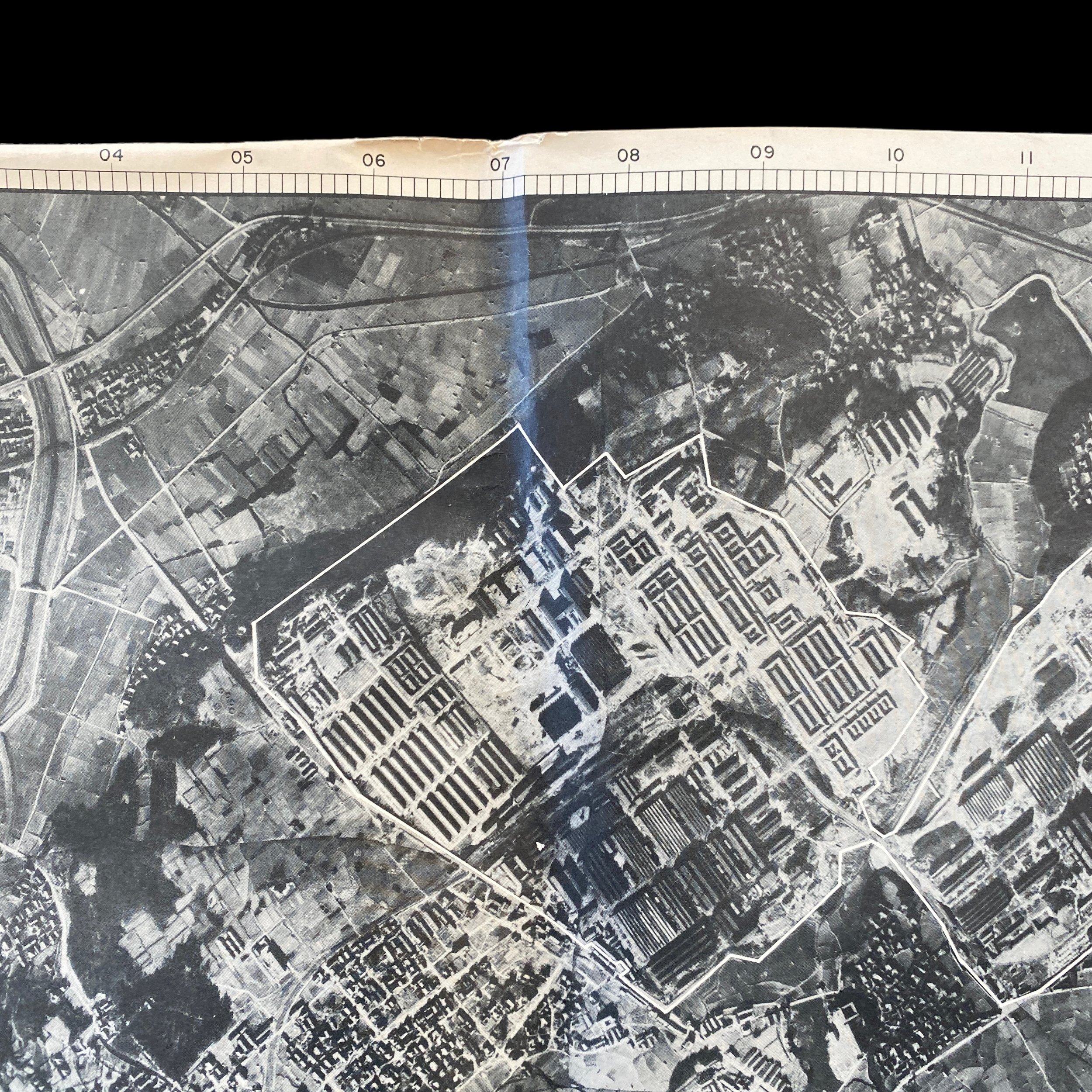RARE! WWII 1945 B-29 Navigator XXI Bomber Command HIRAKATA AREA (OSAKA ARMY ARSENAL) JAPAN Target Air Raid Mission Target Photo Map*

















RARE! WWII 1945 B-29 Navigator XXI Bomber Command HIRAKATA AREA (OSAKA ARMY ARSENAL) JAPAN Target Air Raid Mission Target Photo Map*
Comes with hand-signed C.O.A.
These XXI Bomber Command target photo maps rarely come up for sale in the public sector. This is a once in a timeline chance to own a piece of B-29 WWII history.
Mission #248 - B-29 Air Raid on HIRAKATA AREA (OSAKA ARMY ARSENAL)
This incredibly scare and museum-grade ‘RESTRICTED’ WWII XXI Bomber Command (20th Air Force) TARGET AERIAL PHOTO MAP CHART was used during the USAAF long-range bombardment operations, against Japan until mid-July 1945. The XXI Bomber Command was headquartered at Harmon Field, Guam, in the Mariana Islands.
Dated July 1945 and titled “HIRAKATA AREA (OSAKA ARMY ARSENAL) - TARGET NO. 90.25 URBAN”, this A-2 SECTION was produced in limited quantities with previous aerial reconnaissance mission photos by the 3rd Photo Reconnaissance Squadron taken on January 19th, 1945.
This navigators and bombardier aerial photo chart map was specifically creating using the most updated military intelligence in order to give B-29 Superfortress aircraft the most accurate target information. This was done for fast and effective target identification as well as accurate navigation and bomb/incendiary accuracy. These target photo charts were handed to B-29 crews during the target mission briefing and were then carried on the B-29 aircraft to used during the raid itself.
These aerial photo charts were referenced during pre-mission briefings as well as when the bombardier was approaching the target. This was meant to provide the B-29 bombardier with the most real view of his target for the best target identification. The most important primary target buildings were always outlined and marked with a number to be referenced on the target key.
History of XXI Bomber Command B-29 Air Raids on HIRAKATA AREA (OSAKA ARMY ARSENAL):
The weather had held up somewhat better than had been expected, allowing five daylight missions in April, three in May, four in June. Thereafter almost a month passed before visual conditions again obtained. On 24 July the command put up 625 planes, directed against 7 targets in the Nagoya and Osaka areas. The attacks were coordinated with a two-day carrier strike in the Inland Sea region. Targets for the B-29's were chosen to give the several formations a wide choice according to local conditions, but in each case the force assigned was considered heavy enough to destroy its primary target.35 Weather turned out spotty; 26 aircraft dropped 166 tons on targets of opportunity and 573 dropped 3,539 tons on primary visual or radar targets.36 The Sumitoma Metal Company's propeller factory, whence most of the machine tools had been removed, was completely wrecked.37 Kawanishi's Takarazuka plant lost most of its buildings and no effort was made subsequently to repair them.38 The Osaka arsenal, though cloud-covered and attacked by only part of the assigned force, suffered additional damage amounting to 10 per cent of the original roof area.39 Aichi at Eitoku sustained its heaviest damage of the war, damage which was superfluous because of previous dispersal.40 Nakajima at Handa, struck for the first time, lost its principal assembly buildings, but the attack came too late in the war to have much direct effect on production. This fifth Empire attack was the last. Two weeks of cloudy weather followed, then the atomic bomb attacks against Hiroshima and Nagasaki ushered in a last spasm of precision strikes in an effort.
In addition to Tokyo, other Japanese cities were also hard hit. Osaka, the second largest city in Japan, with more than 3 million residents and a key industrial, shipping, rail, and war-materials center, was firebombed by three waves of B-29s in nighttime raids over a three-and-a-half hour period on March 13, 1945. According to a summary at Wikipedia, each wave targeted a distinct area of the city. The first wave of 43 U.S. bombers arrived from Saipan; a second group of 107 B-29s came from Tinian, and a third wave of 124 bombers flew in from Saipan. In all, 274 B-29s destroyed more than 8 square miles of the city, leaving nearly 4,000 residents dead and another 678 missing. Osaka would be bombed several more times in June and July and a final time in August 1945, though not all of these raids used firebombs. A total of more than 10,000 residents of Osaka were killed in eight raids by U.S. bombers.